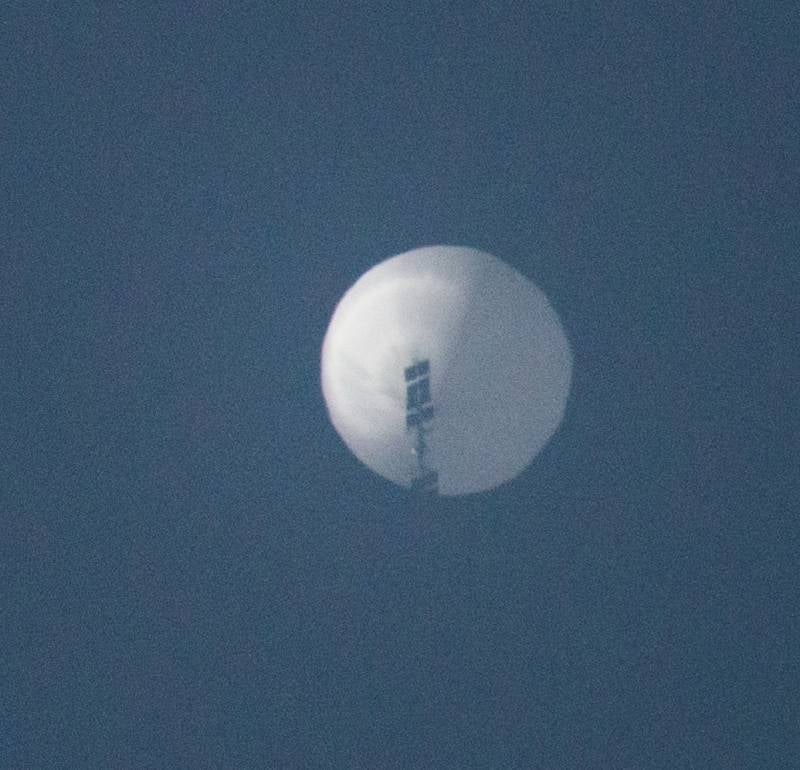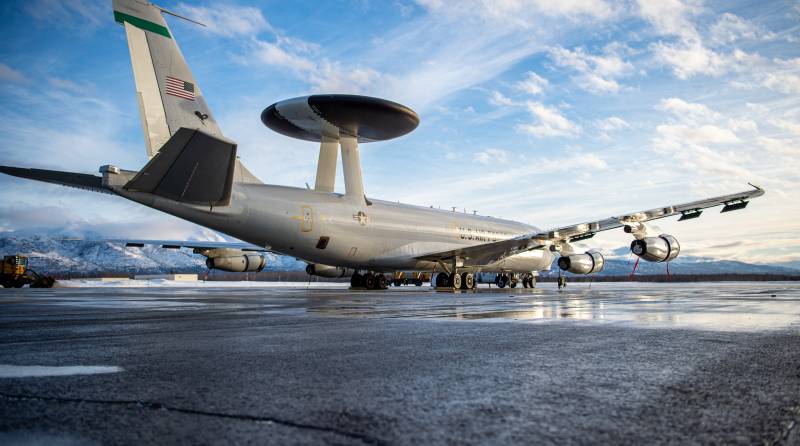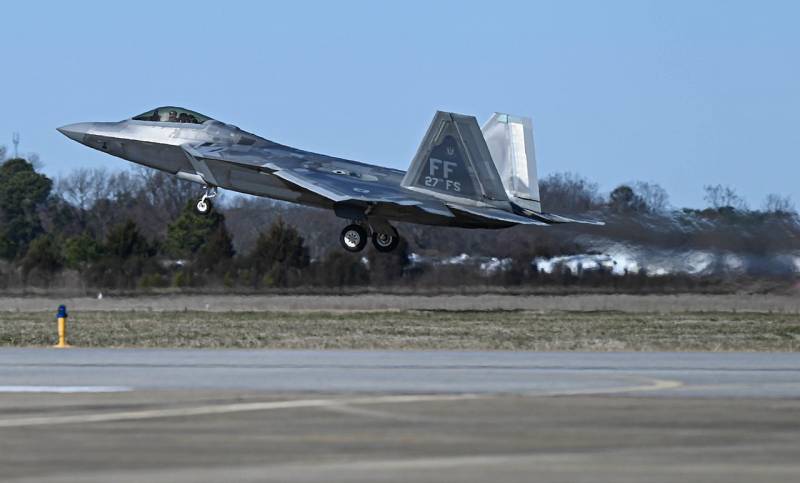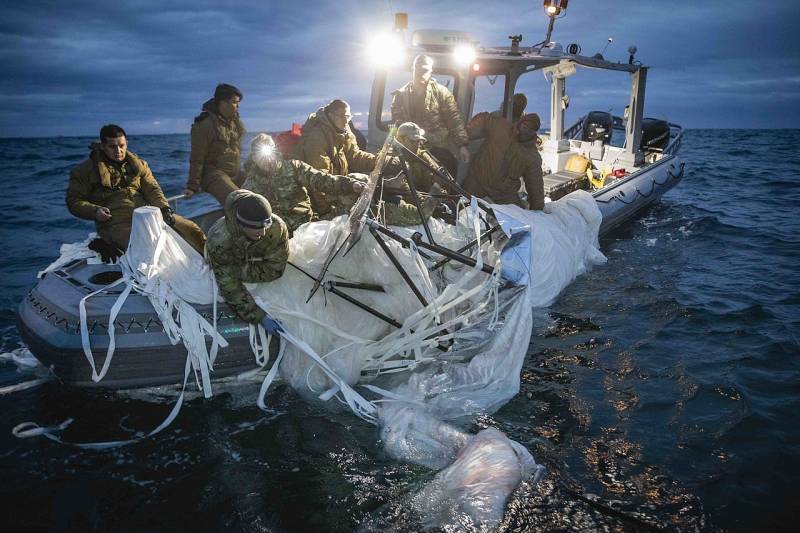Features of intercepting balloons over the USA

Chinese balloon flying over the USA
Over the past few weeks, balloons of unknown origin have repeatedly appeared over the territory of the United States. The US Air Force considers these objects a potential threat and, in order to avoid negative consequences, takes drastic measures. Several operations were carried out to intercept detected targets. Methods and tools for solving such problems are of great interest, as are the results obtained.
First incident
On January 28, an unidentified stratospheric balloon entered US airspace in the Alaska region. Later it became known that it was a research aircraft previously launched in China. Over the next few days, the stratostat, remaining at high altitude, crossed the entire territory of the United States and ended up over the east coast of the country.
According to the Pentagon, the object was constantly monitored by various means. Various ground-based radars, early warning aircraft, reconnaissance aircraft, etc. were involved in these activities. At the same time, the stratostat was not shot down. Allegedly due to the threat of falling debris in populated areas. At the same time, with the help of electronic warfare, the device was prevented from collecting and transmitting data.
On February 4, the stratosphere balloon passed over the piece. South Carolina and ended up over the Atlantic Ocean. Only after that began the operation to destroy it. Federal Office of Civil aviation at the request of the Ministry of Defense, a large area was closed for flights, incl. several airports. Several Navy ships were called to the interception area.
The interception of the air target was entrusted to the F-22A aircraft from the 1st Air Force Fighter Wing based at Langley Airfield (Virginia). According to external target designation, the fighter went to the area where the target was located and spotted it with its own means. He then launched an AIM-9X Sidewinder air-to-air missile. The stratostat was successfully hit and fell into the water. At the time of the rocket explosion, the target was at an altitude of 58 thousand feet (about 17,6 km).

Aircraft AWACS E-3 - such complexes participated in tracking balloons
After the fall of the stratospheric balloon, the ship's group involved in the operation began to search for the wreckage. To date, most of the fragments have been found, raised to the surface and sent for study. Search work continues.
New episodes
Just a few days later, another high-altitude balloon-type target was spotted on approach to Alaska. This time, the Pentagon did not wait and passively observe the situation, attracting various forces and means. Within a few hours, an appropriate decision was made, after which interception activities began. On February 10, the stratostat was shot down.
As a few days earlier, the interception of the target was carried out by the F-22A fighter, which took off from one of the nearest bases. He worked on external target designation and used his own means. The AIM-9X missile was again used.
At the same time, another balloon passed over the American Alaska and ended up over the Canadian Yukon. The two countries quickly agreed on a follow-up action, and the USAF intercepted. The F-22A fighter with the latest Sidewinder missiles was again working on an air target.
Thus, in a few days, F-22A fighters from different squadrons scored three aerial victories. It is curious that this is the first effective combat use of such aircraft in 17 years of service. In addition, for the first time since the Second World War, the US Air Force had to carry out a real interception over its territory.

An F-22 fighter jet takes off from Langley Air Force Base to intercept a high-altitude target, February 4
On February 12, another unidentified object was shot down over Lake Huron. As before, the components of the NORAD system monitored the flight of the target. At the same time, the interception was entrusted to the US National Guard. An F-16C fighter, armed with an AIM-9X missile, performed a combat sortie with a successful hit on the target.
Forces and means
As the situation developed, the Pentagon covered the situation and talked about their actions. In particular, it was reported about the involvement of certain forces and means to track air targets and / or take the necessary measures. As it turned out, the solution of problems that suddenly arose required certain efforts and joint work of a number of structures and components of the armed forces.
All four balloons were initially detected by ground-based radars from the NORAD system. At the same time, there is information about difficulties with the constant tracking of targets - due to the peculiarities of their design. In addition, the E-3 Centry AWACS aircraft took part in tracking the first balloon. Whether such aircraft were involved in other incidents is unknown.
It was assumed that a foreign aircraft is reconnaissance of American territory and transmits data. In this regard, an RC-135 electronic reconnaissance aircraft operated in the areas of its location. He tracked attempts to exchange data, and also suppressed communication channels. The use of scouts in the other three episodes was not reported.
According to unofficial data, during the flight of the first balloon over the Middle West, two U-2S reconnaissance aircraft were involved in observations. They could visually observe the target, as well as shoot, intercept radio signals and interfere. There is no exact information about the operation of such aircraft.

AIM-9X missile
In three cases out of four, the interception was assigned to F-22A aircraft. It is a supersonic low-observable fighter with an advanced sighting and navigation system, wide network capabilities and modern weapons. The main means of observation and detection is the AN / APG-77 airborne radar with AFAR. The detection range of an air target, depending on various factors, reaches 150-160 km. The maximum speed of the aircraft at an altitude reaches 2,25 M, the ceiling is 20 km. The combat radius with a typical load exceeds 800-850 km.
The F-16C used in one of the interceptions is a light multirole fighter and is quite old. This aircraft is equipped with an AN / APG-66 radar with a detection range of large fighter-type targets of up to 50-60 km. The F-16C has a speed of over Mach 2 and rises to a height of up to 18 km. Combat radius - 550 km.
AIM-9X missiles were used to combat balloons. This is the last product of the Sidewinder family, it entered service ca. 20 years ago and in the future it has undergone modernization. Version "X" differs from previous missiles in the line by an improved infrared seeker and a thrust vector control engine. Launch range - 20 km.
Interception features
The latest American operations to intercept balloons have a number of interesting features that show the potential of a particular technique in solving specific problems. Obviously, the results of these events are of interest both to the Pentagon and to foreign structures - and they are already being carefully studied.
Due to the well-known design features, stratospheric balloons are considered a difficult target for detection and tracking by radar. As reported, US ground and airborne radars generally coped with the task of tracking balloons. In addition, they managed to point fighter jets at the objects. At the same time, various difficulties could be present in the form of a temporary loss of contact with the target, etc.

American sailors found a fragment of the balloon shell, February 4
To defeat all four targets, AIM-9X missiles with infrared seeker were used. Shooting results show what is weapon quite capable of fighting aircraft without a powerful hot exhaust. Apparently, IKGSN missiles were aimed at elements of balloons that reflect sunlight. The proximity fuse and high-explosive fragmentation warhead also performed well and coped with the defeat of a difficult target.
At the same time, the US Air Force encountered difficulties and objective limitations. So, the first balloon was in their area of responsibility for several days, but it was not shot down. According to official information, due to the absence of a direct threat and the risk of falling debris.
However, it is known that for a long time the stratospheric balloon flew at altitudes of at least 28-30 km. There he could be detected, but interception by the available means was apparently impossible. Available fighters would not have had enough altitude performance to reach the required flight level and deliver the AIM-9X missile to the optimal launch point. In this regard, the balloon was shot down only when it was at a lower altitude and entered the range of the fighters.
Limited opportunities
There are several key takeaways from the incidents of recent weeks. The most obvious is that balloons are still too early to write off, and they can be a convenient tool for solving certain problems. Such an aircraft, depending on various factors, can be detected and followed by radar stations. However, its destruction is not always possible and only under certain conditions.
The observed situation with balloons in US airspace is of great interest to study. It shows the real potential of the US Air Force in intercepting air targets, incl. complex. Obviously, this situation is being closely monitored both in the US and abroad and draw conclusions. And, apparently, the US Air Force is not getting the highest rating, which can have serious consequences.
Information